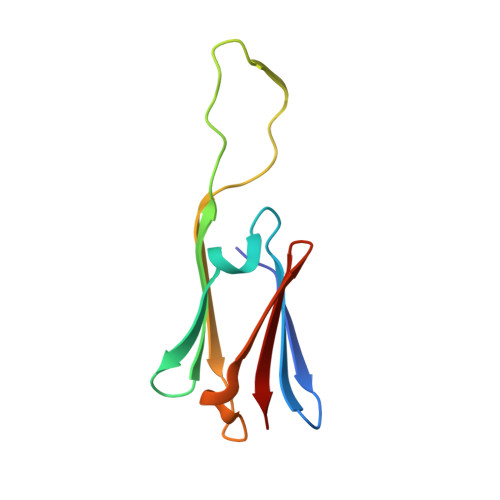Structural principles that enable oligomeric small heat-shock protein paralogs to evolve distinct functions.
Hochberg, G.K.A., Shepherd, D.A., Marklund, E.G., Santhanagoplan, I., Degiacomi, M.T., Laganowsky, A., Allison, T.M., Basha, E., Marty, M.T., Galpin, M.R., Struwe, W.B., Baldwin, A.J., Vierling, E., Benesch, J.L.P.(2018) Science 359: 930-935
- PubMed: 29472485
- DOI: https://doi.org/10.1126/science.aam7229
- Primary Citation of Related Structures:
5DS1, 5DS2 - PubMed Abstract:
Oligomeric proteins assemble with exceptional selectivity, even in the presence of closely related proteins, to perform their cellular roles. We show that most proteins related by gene duplication of an oligomeric ancestor have evolved to avoid hetero-oligomerization and that this correlates with their acquisition of distinct functions. We report how coassembly is avoided by two oligomeric small heat-shock protein paralogs. A hierarchy of assembly, involving intermediates that are populated only fleetingly at equilibrium, ensures selective oligomerization. Conformational flexibility at noninterfacial regions in the monomers prevents coassembly, allowing interfaces to remain largely conserved. Homomeric oligomers must overcome the entropic benefit of coassembly and, accordingly, homomeric paralogs comprise fewer subunits than homomers that have no paralogs.
- Physical and Theoretical Chemistry Laboratory, Department of Chemistry, University of Oxford, Oxford OX1 3QZ, UK.
Organizational Affiliation:

















